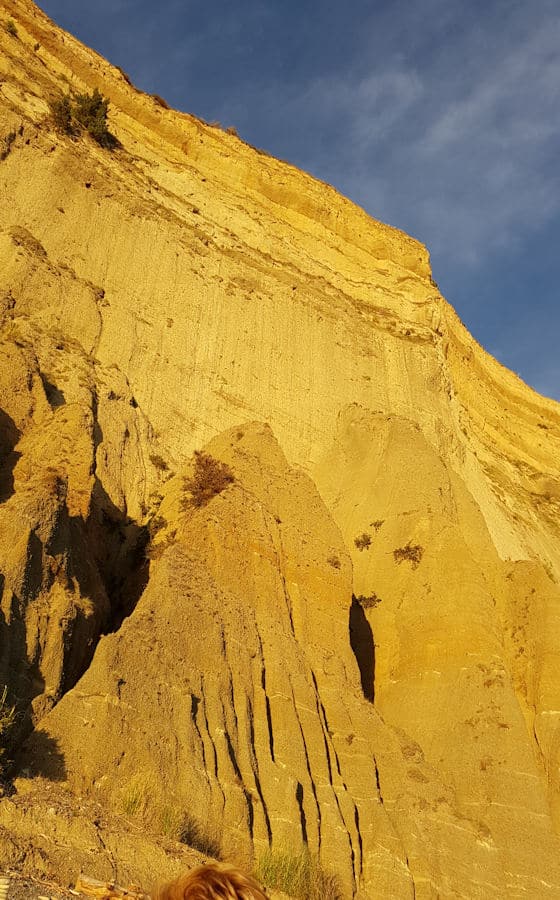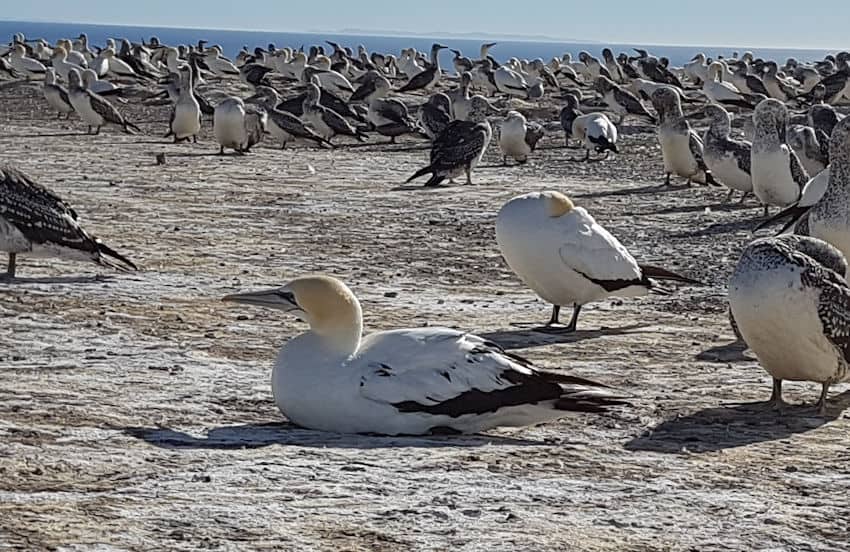Cape Kidnappers/Te Kauwae-a-Māui is situated at the eastern tip of the province of Hawke’s Bay. In Māori mythology, Te Kauwae-a-Māui is the tip of the fishing hook that Māui used to pull up the North Island/Te Ika-a-Māui (‘the fish of Māui’) from the sea.
In 1769 it was named “Cape Kidnappers” by Captain James Cook, the famous English explorer, when local Maori attempted to kidnap his ships interpreters’ son, a young Tahitian boy.

The coastline from Clifton to Cape Kidnappers has a very interesting geological history. Towering cliff faces show clear evidence of different layers of sedimentary material. Earthquake faultlines, gullies and fossils can be clearly seen as well as evidence of the slump of the land due to the tectonic movement. The track is also tidal so make sure you are aware not to be caught by the incoming water!
Cape Kidnappers is the largest mainland nesting site in the world and accommodates almost 25,000 gannets at its peak with approximately 5,000 breeding pairs.
These gannets are the Australasian Takapu gannet. With a 1.8 m wing-span this bird is predominantly white with pointed wings, a long neck and slender body. With black on the trailing edges of it’s wings and within it’s tail feathers, a bluish-grey bill with a black lining and deep blue around the eyes they are distinctive and very elegant looking birds.
There are 4 main nesting sites at Cape Kidnappers being the Plateau, Black Reef, Saddle and Whalebone Reef and you can spot the gannets in high numbers from August to April each year.
The gannets were not mentioned by Captain James Cook on his travels around New Zealand so it is presumed they arrived later. The first note of the gannets on this site was around 1850 by Henry Hill, a New Zealand naturalist.

Gannets impressively take their first flight at 15-16 weeks and it is a migration to Australia around 2,800 km. Those that survive, and the numbers are low with approximately 70-80% perishing before returning to NZ. This return is approximately 2-3 years later and after this return they remain at the colony for the rest of their lives, on the land during breeding and winter months out in the New Zealand waters.
The males return before the females and either re-occupy, establish and then defend a nest. Gannets tend to mate for life. Only one egg is laid although if that is lost a replacement egg may be laid.
So when you’re next in the area make a point of heading to see the gannets - a visit to Hawkes Bay just wouldn’t be the same without one!